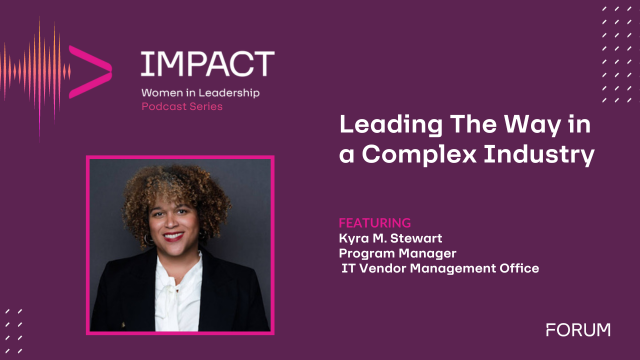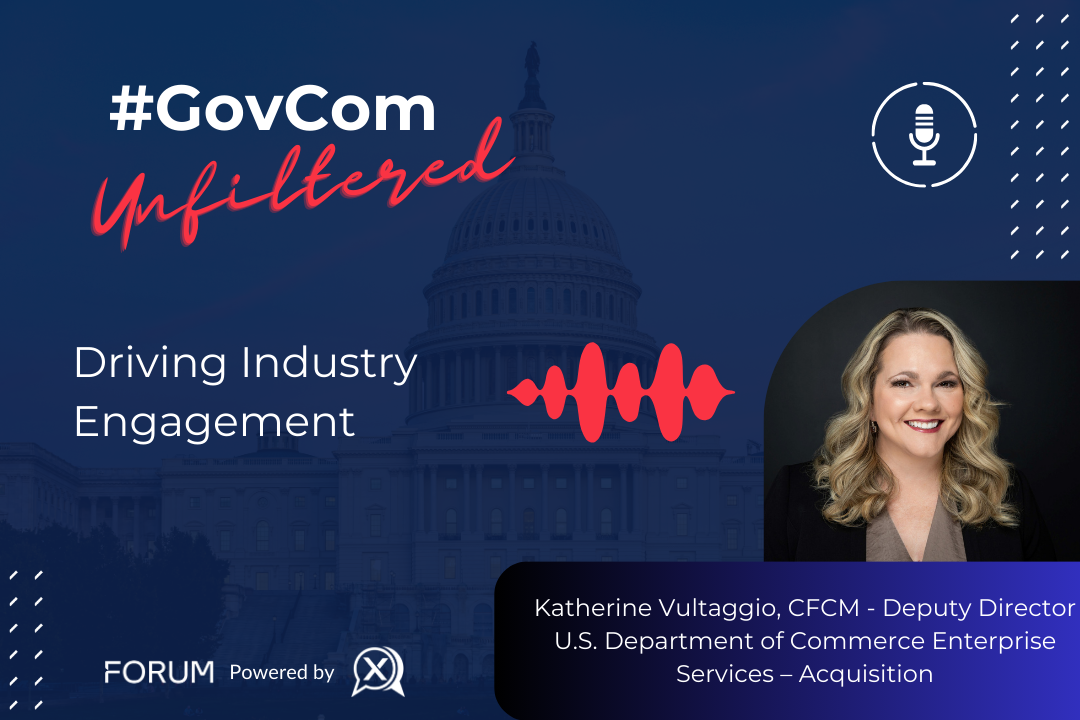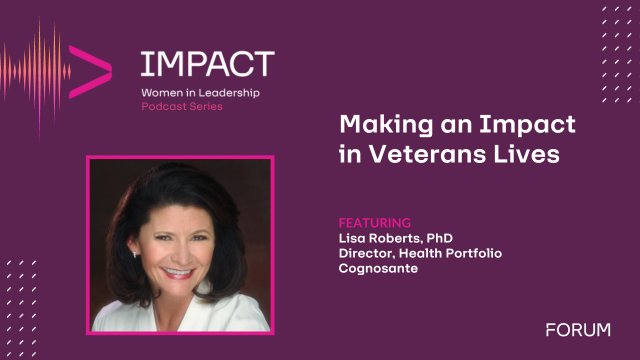FedHealthIT’s President, Susan Sharer, took the opportunity to catch up with Stacy Cummings, Principal Deputy Assistant Secretary of Defense, Acquisition Enablers at the United States Department of Defense. Ms. Cummings currently serves as a senior advisor on policy, enablement and oversight focused on ensuring Program Managers within the Agency are more successful, that the acquisition system is as healthy as possible, and that the Agency has the data and information needed to inform Congress and support decision-making.
This article was featured in the recent FedHealthIT Winter 2020 Magazine.
Tell us About Some of the Positive Disruption Happening on the Acquisition Side
In the past we tried to collect data at the Department level and used people to take and analyze that data to drive decision making.
Our goal for the near and medium term is to look at data across the Enterprise, to bring it together in a way that will allow us to use advanced analytic capabilities and tools to look at the data where it resides. There is an opportunity to use more innovative tools to draw information when it is needed to make decisions when and as needed. This on-demand, bigger picture look will help evaluate and support the overarching health of the defense acquisition system.
We’re looking at areas where policy hasn’t changed in a long time or kept up with modern techniques and considering what might be changed, what kinds of pilot programs can be initiated. The goal is to find areas in which we are not making the advances we should be and trying to understand better where we should go next from an acquisition innovation perspective.
What are Some Quick Wins Already Identified?
There are many successes, from something as simple as collecting data that had been in spreadsheets into a web enabled database able to look at different types of data with the lens of a single data dictionary. We have centers of excellence within the Agency that are using data analytics with great success and have done a bit with machine learning, looking at trends and looking forward to see what the future will look like. We’ve had some early success in this area and have identified this as a priorityfor the year ahead.
Beyond a one-size fits all pathway for Program Managers
We view Program Managers as the customer of what we do as acquisition enablers. If I think back to my work with MHS GENESIS, Program Managers were responsible for every aspect of acquiring, testing and delivering that capability to MHS and in support of interoperability with the VA. Program Managers need to be able to look across technical, financial, testing, IT compliance and ultimately have lifecycle responsibility for the delivery of capability. In the past that Program Manager would have to navigate the acquisition system as a one-size fits all pathway for delivering capability whether it involved IT, advanced complex new developments, integrating tools… Looking at the data we have now and our ability to leverage data in new ways, we decided we didn’t want a one size fits all approach. Instead, we have developed an adaptive acquisition framework that allows Program Managers to choose the right pathway for the work they are undertaking to deliver their capability to the Warfighter as quickly as possible.
Of course, there is still a need for oversight, to ensure we are spending appropriately but we understand that now to involve the right level of oversight depending on the risk profile and the capability being developed. For instance, a COTS solution doesn’t require the same type of oversight as that of the next generation of stealth aircraft.

Using data to inform decisions, we’re pushing toward that more adaptable framework based on what is being bought, who is being supported and asking that the oversight, reporting, analysis and all of those things that will help reduce risk, be tailored in at the beginning to help deliver the capability as quickly as makes sense.
At the same time, we understand that in every case we need to involve the user early to be sure we understand their needs. We also want to be sure we are planning for the cost of acquiring the capability from the very beginning of the acquisition lifecycle, to sustainment and to when we might replace that capability with something new. In the past, as we would collect lessons learned, the trend was to add new policy requirements, which impacted all Program Mangers. Our goal now, in our new policy that will be rolled out in December, is to focus on empowering Program Mangers to think critically and leverage data for better decision-making.
This new policy will be put into the hands of Program Mangers and into the hands of the Defense Acquisition University so that they can instill those innovative acquisition oversight thoughts into the new Project Managers being trained.
What Kind of Integration Will This Require?
One area under my portfolio is intellectual property. We’re writing policy at the Department level to ensure we’re all looking at this through the same lens, from how we ensure we are partnering with industry from a data rights perspective to ensure we are not pushing away industry partners. We’re focused on getting that policy out and also developing a cadre of experts who can help support Program Mangers, share lessons learned and best practices, and drive intellectual property decisions early in the program lifecycle.
It’s always been my preference to have contracting officers be part of the team so they aren’t just waiting for us to ask for something but instead are in the room when decisions are being made, giving advice about making the RFP successful, and negotiating with industry partners. This is the way I have always interacted with my contracting team and one way to make teaming more successful.
That style of colocation and real partnership applies in the same way to the chief engineer, the cyber team, the business and financial teams. We need to get all of the technical and nontechnical aspects of the project together as part of the decision making team.
What is the Opportunity for Industry?
My focus has been on communicating, partnering and getting feedback from both Government and industry. We have engaged several industry associations to share our strategy and thinking, to get feedback on our policy and how they can help us speed capability delivery, implement modern software development techniques, and inform intellectual property. We are communicating with industry stakeholders with a focus on getting feedback.
We have received some interesting feedback that has helped us think through and bring in Government experts where needed. We’re doing the same on the Government side and of course, are working to communicate with, share information and get feedback from the large acquisition workforce across the DoD. We’re also looking for new candidates for the DoD Public-Private Talent Exchange Program that helps Government and business better understand each other’s operations and share best practices.
Tell us More About the Adaptive Acquisition Framework
Part of this involves the creation of a unique pathway for the development and delivery of software. We now understand that we need to treat software and hardware differently, and understand how we leverage modern software development. We have gained insight into how the commercial sector treats software. The interim policy, due out in December, will allow project managers to really break away from the hardware centric policies that had been in place to better leverage the modern, iterative nature of software DevSecOps, building in cybersecurity from the start, integrating tests early in the lifecycle to be able to make those changes that will be important to the user. This is all so important and I’m really excited to see it coming forward.
ABOUT STACY CUMMINGS
 Ms. Stacy Cummings is a career member of the Senior Executive Service, and currently serves as the Principal Deputy Assistant Secretary of Defense, Acquisition Enablers (PDASD(AE)). In this position, she advises the Assistant Secretary of Defense for Acquisition (ASD(A)) on matters relating to the Department of Defense Acquisition System while advancing innovative, data driven approaches across the acquisition enterprise. Previously serving as the Program Executive Officer, Defense Healthcare Management Systems (PEO DHMS), Ms. Cummings managed the delivery of Healthcare and advanced data sharing through a modernized electronic health record for Service Members, Veterans, and their families.
Ms. Stacy Cummings is a career member of the Senior Executive Service, and currently serves as the Principal Deputy Assistant Secretary of Defense, Acquisition Enablers (PDASD(AE)). In this position, she advises the Assistant Secretary of Defense for Acquisition (ASD(A)) on matters relating to the Department of Defense Acquisition System while advancing innovative, data driven approaches across the acquisition enterprise. Previously serving as the Program Executive Officer, Defense Healthcare Management Systems (PEO DHMS), Ms. Cummings managed the delivery of Healthcare and advanced data sharing through a modernized electronic health record for Service Members, Veterans, and their families.












